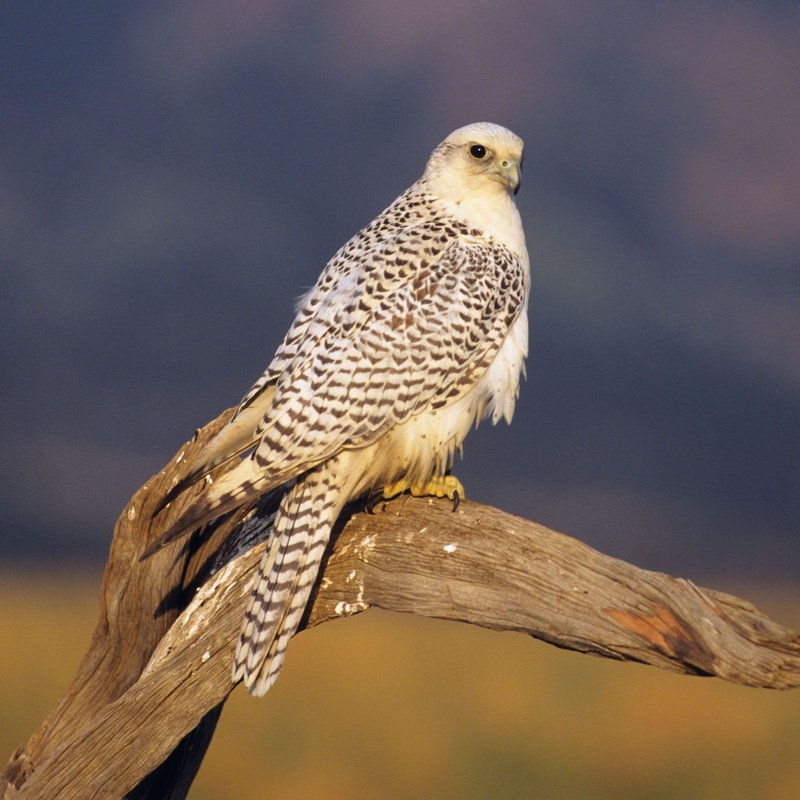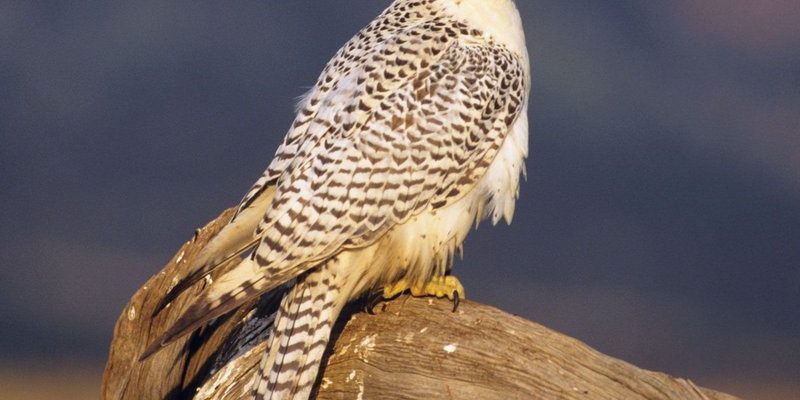
With climate change and habitat loss looming over many species, it’s crucial to dive into the conservation status of the gyrfalcon. They may seem resilient, but even these powerful birds face challenges that put their future at risk. So, let’s explore the world of the gyrfalcon and uncover some global insights into their conservation status.
Understanding the Gyrfalcon’s Habitat
Gyrfalcons are true Arctic dwellers, primarily found in places like Greenland, Canada, and parts of Alaska and Northern Europe. Their habitat consists of barren tundra, wind-swept cliffs, and vast open spaces where they can soar effortlessly while hunting for prey.
The unique environment plays a big role in their life cycle. They are highly adapted to freezing conditions, sporting thick feathers that keep them warm. Here’s the thing, though: as our climate changes and warmer temperatures creep into these frigid areas, many aspects of their habitat are shifting. Melting ice, changing prey availability, and increased human activity are all factors that can threaten the delicate balance these birds rely on.
But don’t underestimate their adaptability! Gyrfalcons can also be found in some more temperate regions, showcasing their versatile nature. This adaptability might help their populations survive in fluctuating climates, yet it also poses questions about what changes they can comfortably tolerate.
Population Status of Gyrfalcons
So, how many gyrfalcons are there? The truth is, estimating their population can be tricky. They are not listed as endangered by the IUCN (International Union for Conservation of Nature), but populations vary widely across regions. In some areas, they are doing relatively well, while in others, their numbers are dwindling.
In North America, estimates suggest that the population hovers around 20,000 individuals. This number seems stable, but it represents just a fraction of what it used to be. In Europe, they face more significant concerns as habitat loss, hunting, and climate change affect their numbers. Countries like Norway and Sweden have implemented conservation measures that seem to help, but continued efforts are necessary to ensure they thrive.
Honestly, it’s not just about the numbers. Understanding why their populations fluctuate can shed light on larger environmental issues. If gyrfalcons struggle to survive, it’s a red flag about the health of their ecosystems as a whole.
Threats Facing Gyrfalcons
Gyrfalcons may be impressive hunters, but they’re not without their enemies. Here are some of the major threats impacting their populations:
- Climate Change: As temperatures rise, their habitats are altered, leading to changes in prey availability. This can make it harder for them to find food.
- Habitat Loss: Urban development, agriculture, and resource extraction encroach on their living spaces, pushing them into less suitable areas.
- Pollution: Chemicals and pollutants can affect their prey and harm their health over time.
- Hunting: In some regions, legal and illegal hunting practices directly affect local populations.
Each of these threats plays a part in the bigger picture. And while some threats are human-induced, others are part of natural fluctuations in their environment. However, the growing impact of human activity is undeniable.
Global Conservation Efforts
Across the globe, various organizations and countries are stepping up to protect the gyrfalcon. In North America, the Bird Conservation Partners and local conservation groups are actively monitoring populations and conducting research to understand their needs better.
In Europe, countries like Norway and Sweden have initiated programs to maintain and restore habitats for gyrfalcons. These programs often involve community engagement, encouraging local people to protect the birds they share their environment with.
There’s also the aspect of education. By informing the public about the gyrfalcon’s role in the ecosystem and its cultural significance, they foster support for conservation efforts. At the end of the day, conservation isn’t just about saving animals; it’s about maintaining the balance of our environment.
The Role of Legislation in Protection
Legal frameworks play a significant role in the protection of gyrfalcons. Many countries have laws that safeguard wildlife, making it illegal to hunt or harm these birds without a permit. In the U.S., the Migratory Bird Treaty Act helps protect migratory birds, including the gyrfalcon.
Internationally, agreements like the Convention on Migratory Species offer a platform for countries to collaborate on conservation efforts. These laws provide a safety net that allows for monitoring and research, which can lead to better protection strategies.
However, enforcement can be inconsistent. That’s why raising awareness and supporting stricter regulations is critical to ensuring their protection. It’s a complex dance between humans and nature, but every step counts.
What You Can Do to Help
Feeling inspired to make a difference? There are plenty of ways individuals can contribute to the conservation of gyrfalcons and other wildlife.
- Support Conservation Organizations: Whether through donations or volunteering, your support helps fund essential research and protection efforts.
- Spread Awareness: Share information with friends and family about the importance of gyrfalcons and conservation efforts.
- Reduce Your Footprint: Be mindful of your environmental impact. Simple changes like reducing waste and using sustainable products can help protect wildlife habitats.
Every little bit helps. If everyone took small steps, the cumulative impact could be significant.
The gyrfalcon, with its striking appearance and robust hunting abilities, certainly commands respect. But they are also an indicator of how well our ecosystems are faring. While they are currently not classified as endangered, the threats they face are real and pressing.
As we’ve explored, understanding their population status, the challenges they encounter, and the ongoing conservation efforts is vital. It might seem like a complex issue, but each one of us can play a part. Whether you’re spreading awareness, supporting organizations, or reducing your environmental impact, every action counts.
Together, we can create a future where the gyrfalcon and many other species continue to thrive. Let’s stay engaged and informed. After all, the health of our planet depends on it.

